|
|
|
|
July 3 - July 7, 2008 Wed, We fly from Osaka, Japan to Bangkok, Thailand for an overnight stay at the Peninsula Hotel before flying on to Chiang Rai the following day. The hotel has completed its spa renovation but the surrounding neighborhood seems to have continued its deteriorating descent. Thur, pouring rain. Our flight arrives in Chiang Rai around mid-day. A car from the Four Seasons Tented Camp arrives to pick us up for the hour overland drive. As we move toward the Golden Triangle (Thailand, Myan Mar [Burma], Laos), we see evidence of numerous Queen Mother supported projects, mostly agricultural as in fruit trees, tea, coffee, sugarcane. This is Thailand's way of moving its economic base off of opium growth, production and trade for which this region is notorious since the early 1950s. At the river's edge, we hop in a long boat for a 25 minute trip to the camp's dock. Along the river are an endless number of fish traps managed by local fishermen from their daily rounds by boat. Perched on a hill overlooking the banks of the Ruak River, the camp is situated right around the bend from the Mekong River. Myan Mar and Laos seem very close. Tented Camp Facilities
Mahout Training and Elephant Activities Like many of the elephant rescue projects in Thailand, the animals are removed from city environments where when young they are made to work entertaining tourists under harsh and poor conditions. Historically, the elephants were used in logging and hard labor jobs but as logging has died out so has the need for working elephants. Older, larger elephants remain a problem for urban landscapes when they are turned loose. - Feeding and Grooming 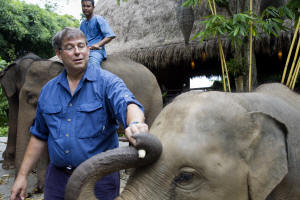
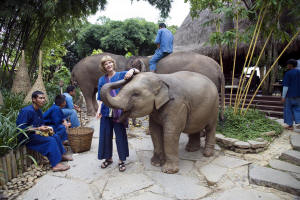
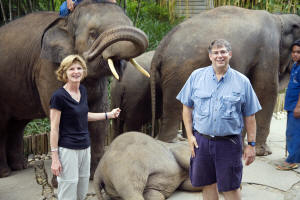
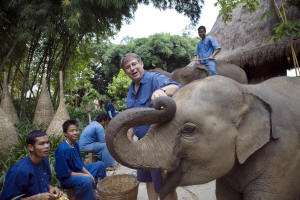
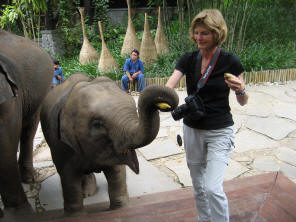
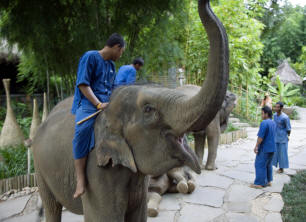
- Training Potential Mahouts 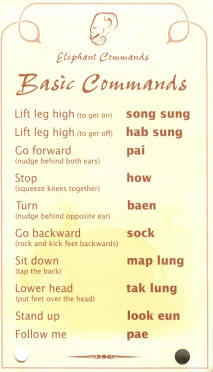
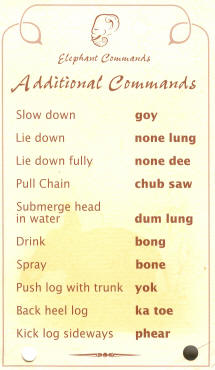
Since the elephants already know the basic commands above,
we are the ones learning to interact with these giant animals. One's
perspective changes radically from atop of an elephants head. - Bathing the Mahouts (and the elephants) Mekong River and Myan Mar We take a short boat trip down the Sob Ruak River to where it meets the Mekong River. The picture of the Triangle intersection is depicted in the tourist map and surrounding pictures. The Burma casino left of center of the top picture serves as an employer for local Thai and Laotian people in addition to a haven for regional gambling. Across on the Laos side, site work has started for Laos' own casino. Thailand is not represented since it does not permit gaming in the country. 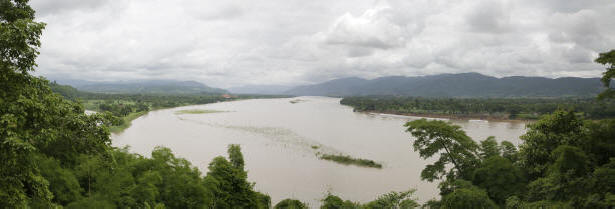
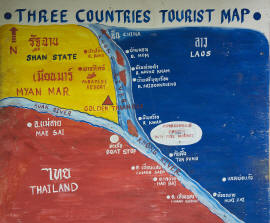
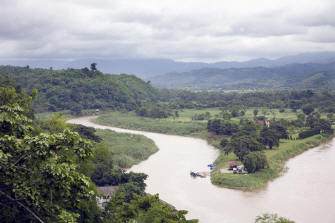
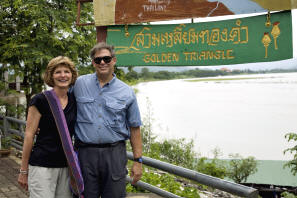
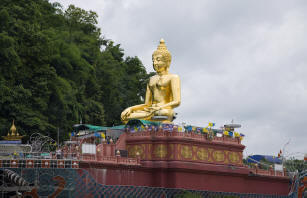
On shore, we ride a tuk-tuk into Chiang Saen to visit the morning market and a local wat. Green eggs really exist in this part of the world. During a large rain storm, we spent the afternoon in the Hall of Opium (no pictures), a $10 million museum illustrating the history of opium including the Golden Triangle's participation and opium's negative impact on Thailand. 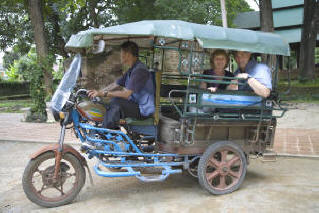
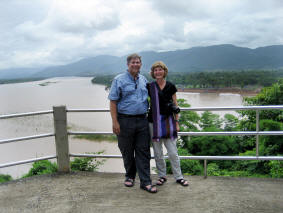
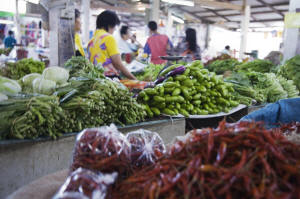
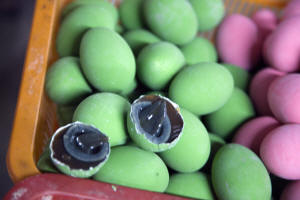
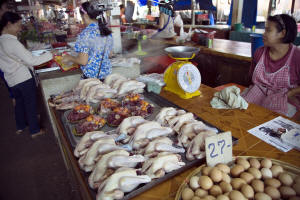
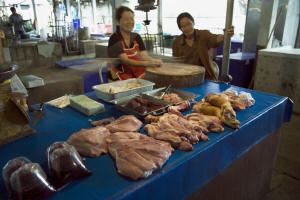
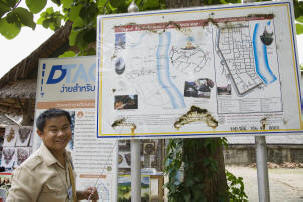
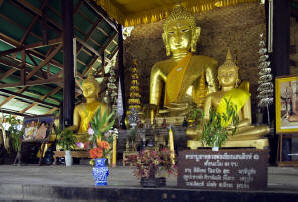
In the afternoon of July 5th, we drove to Mae Sai, obtained a day visa and crossed the border into Burma at Tachileik. Since the border guard retains our passport we have incentive to return with the allotted 24 hours. We visit a new Buddhist temple that has lined its upper walls with the story of Buddha's life. 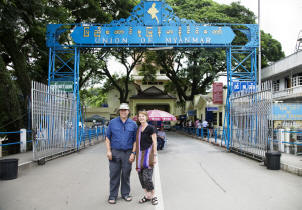
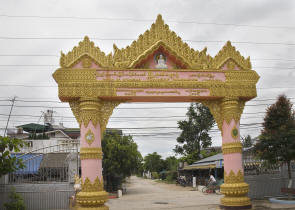
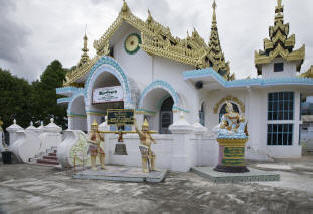
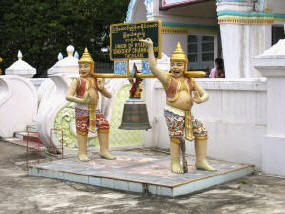
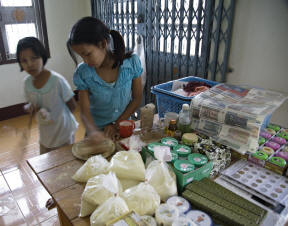
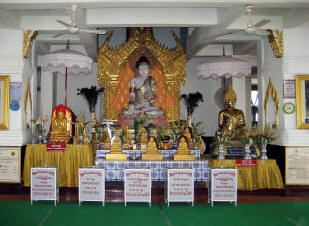
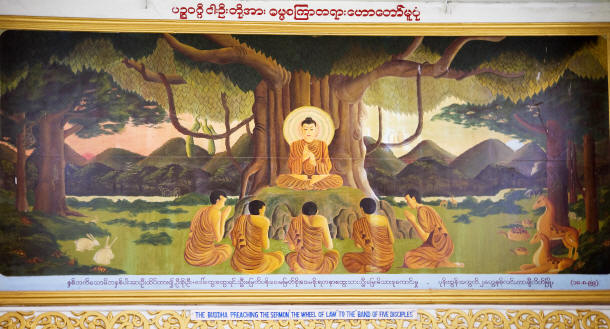
The main tourist attraction in the border town is a gold
stupa of Shwedagon Pagoda perched on top of a hill overlooking the city.
It serves as a pilgrim spot for visitors to make an offering (release a sparrow,
light candle, wash symbol of day of week) to the representative week day on
which they were born. Politics aside, Tachileik supports a fluid population of
workers crossing into and out of the Union of Myanmar daily. There remains
a deep level of poverty that is masked to westerners by the readily accessible
churning retail markets of knock-off cigarettes, pirated movie and music dvds,
and just about any other unauthorized items and/or activity imaginable.
The Chinese frequent this area due to its proximity.
Above is the neighborhood gas station, all one has
to do is drive up to the tiered shelf of gasoline filled bottles, pop the
top and pour into the gas tank for a quick petro fix. Whether
construction or transportation, the Burmese have their own methodology.
With a big sign of relief, we receive our passports when
we cross the bridge back into Thailand. While waiting for our paperwork,
we note stacks of processed applications for visas sitting outside next to us
filled with personal information within arms reach. So much for privacy of
information. |
|
|